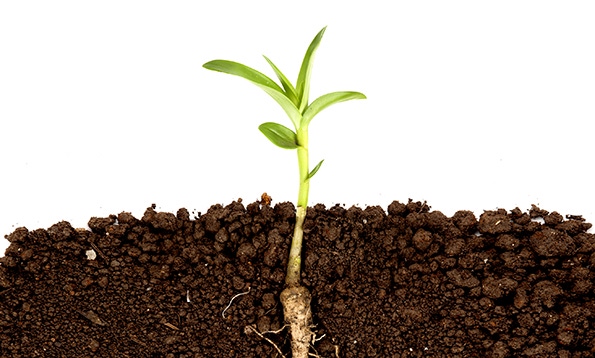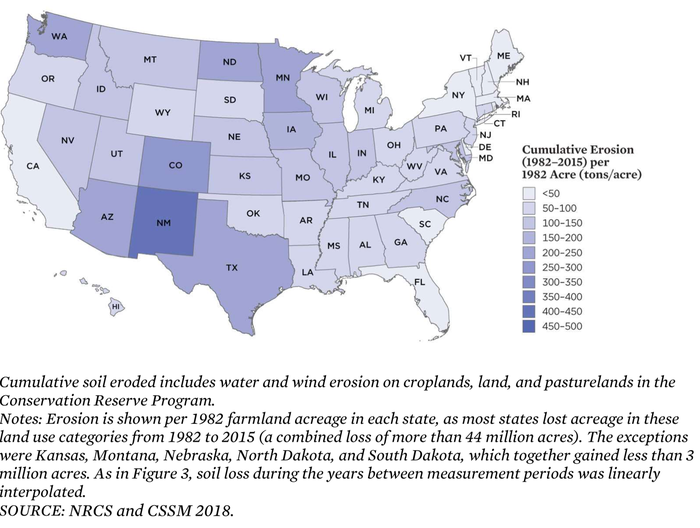December 28, 2020

If soil continues to erode at current rates, U.S. farmers could lose a half-inch of topsoil by 2035—more than eight times the amount of topsoil lost during the Dust Bowl – and nearly three inches of topsoil by 2100, according to a study released by the Union of Concerned Scientists. Given that it takes a century or more for an inch of soil to form naturally, the United States will lose the equivalent of at least 300 years’ worth of soil by 2100 if today’s trends prevail.

“Soil erosion is a natural process, but it has been vastly and needlessly accelerated by unsustainable agriculture practices in many regions across the United States and globally,” said Marcia DeLonge, author of the study and Food & Environment research director and senior scientist at UCS. “Healthy living soil is the foundation of our food system and as important to our well-being as clean air and water. It reduces erosion, promotes healthy crops and holds more water, making farmers and nearby communities less vulnerable to floods and droughts.”

The UCS study analyzed several scenarios for erosion rates and total soil loss using soil survey data from the National Resources Inventory, a research program conducted by USDA and Iowa State University. The study found if more flooding and droughts lead erosion rates to worsen, farmers nationally are at risk of losing more than two inches of soil by 2035 and five inches by 2100.

“Erosion is not just about degrading farmland, it also is about soil and the excess fertilizer and other pollutants it takes with it running off into places where we don’t want it,” said Karen Perry Stillerman, co-author of the study and senior analyst at UCS.
Soil health
The United Nations Food and Agriculture Organization recognized the importance of healthy soil by proclaiming Dec. 5, 2014, as the first World Soil Day. The event has been held annually since to advocate for sustainable soil management.
Healthy living soil is soil filled with beneficial insects, fungi and microbes that recycle leaves and other material into organic matter and nutrients. It also serves as a natural carbon store to mitigate climate change.
According to USDA's Natural Resources Conservation Service, there are four soil health principles:
Use plant diversity to increase diversity in the soil.
Manage soils more by disturbing them less.
Keep plants growing throughout the year to feed the soil.
Keep the soil covered as much as possible.
Possible solutions
The UCS study outlines several federal policies that could transform the agricultural industry:
Support NRCS efforts to improve, maintain and protect the monitoring, reduction and understanding of soil erosion.
Increase public investments in research, education and extension programs to identify and refine effective solutions for reducing erosion rates.
Strengthen federal crop insurance to incentivize practices that reduce erosion.
Provide funding to states and tribes to advance soil health programs that address erosion.
Source: Union of Concerned Scientists, which is solely responsible for the information provided and is wholly owned by the source. Informa Business Media and all its subsidiaries are not responsible for any of the content contained in this information asset.
About the Author(s)
You May Also Like




